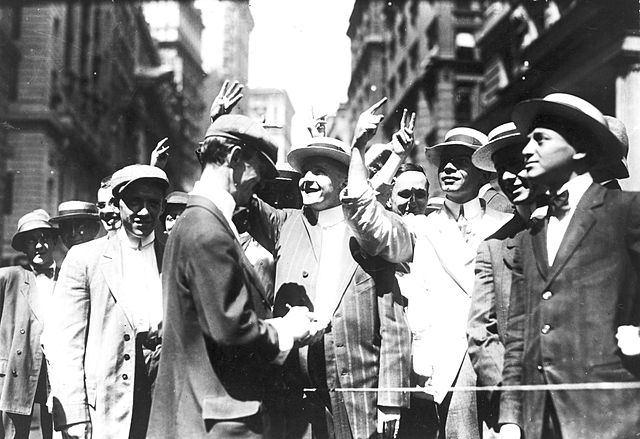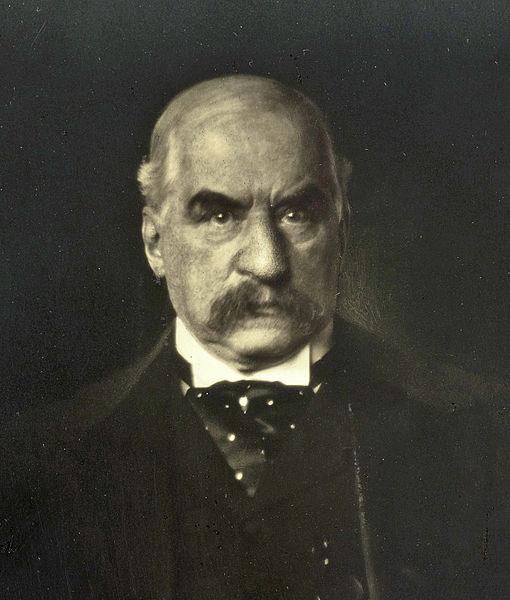Knickerbocker Trust Company
The Knickerbocker Trust was a bank based in New York City that was, at one time, among the largest banks in the United States. It was a central player in the Panic of 1907.
Knickerbocker Trust Company
The original Knickerbocker Trust office, 1893.
Knickerbocker Trust (right, built 1909) and Manhattan Life Bldgs., 60 & 66 Broadway
Share of the Irving Bank-Columbia Trust Company, issued 12 March 1923
The Panic of 1907, also known as the 1907 Bankers' Panic or Knickerbocker Crisis, was a financial crisis that took place in the United States over a three-week period starting in mid-October, when the New York Stock Exchange suddenly fell almost 50% from its peak the previous year. The panic occurred during a time of economic recession, and there were numerous runs affecting banks and trust companies. The 1907 panic eventually spread throughout the nation when many state and local banks and businesses entered bankruptcy. The primary causes of the run included a retraction of market liquidity by a number of New York City banks and a loss of confidence among depositors, exacerbated by unregulated side bets at bucket shops.
The curb outside the New York Stock Exchange's building, where panic began.
Headquarters of the Knickerbocker Trust Company at the northwest corner of Fifth Avenue and 34th Street
J.P. Morgan, the dominant banker in New York City.
Floor of the New York Stock Exchange (pictured in 1908)








